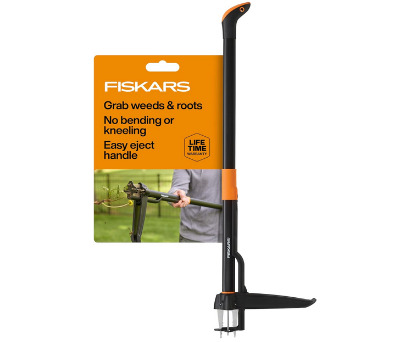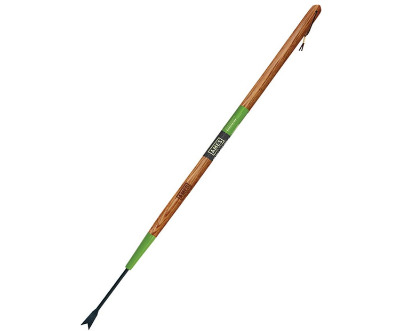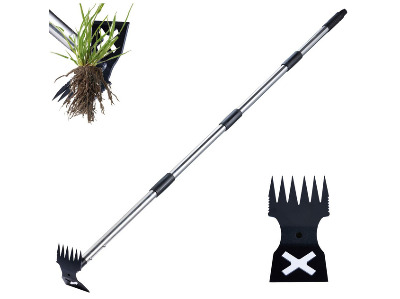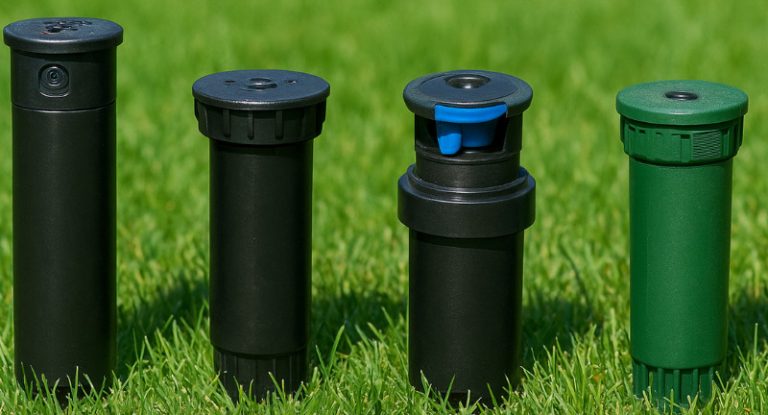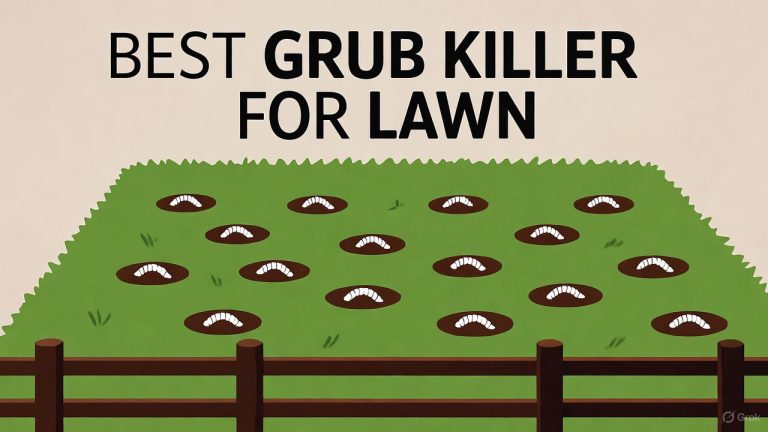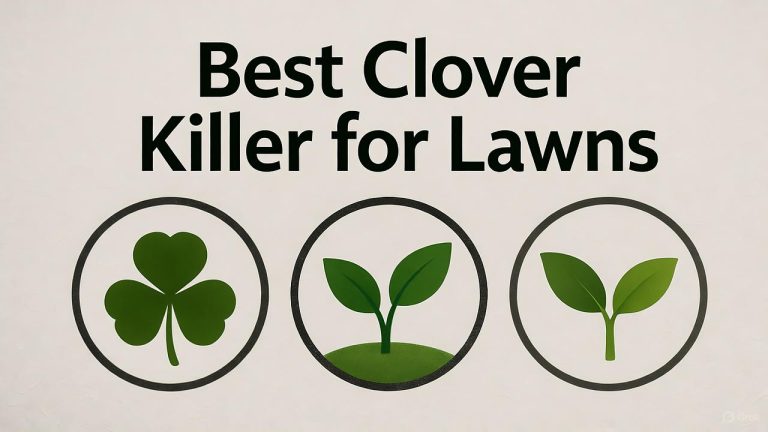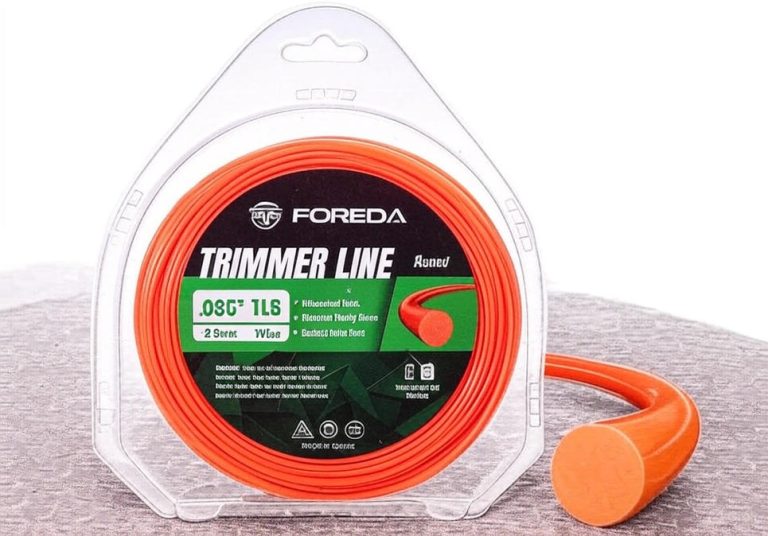5 Best Long Handled Weeding Tools In 2025
Weeding ranks among the most dreaded garden chores. Kneeling on hard soil strains your knees. Bending repeatedly aches your back. Traditional weeding methods leave you exhausted before you finish even a small section of your lawn. Long handled weeding tools solve these problems by letting you work from a standing position while effectively removing weeds from the root.
This comprehensive guide examines five top-rated long handled weeding tools that transform tedious weed removal into a manageable task. Each tool offers unique features designed to tackle different types of weeds and soil conditions. From claw-based pullers to combination hoe systems, we’ve researched performance, durability, and real-world effectiveness to help you find the perfect match for your garden needs.
Understanding Long Handled Weeding Tools
Long handled weeding tools eliminate the physical strain associated with traditional hand weeding. These tools typically feature handles ranging from 39 to 60 inches, allowing you to maintain an upright posture throughout your weeding session. Most designs use leverage mechanics to extract weeds along with their root systems, preventing regrowth and reducing future maintenance.
The right tool depends on your specific garden conditions. Hard clay soil requires robust construction with strong foot platforms. Sandy or loamy soil works well with most designs. The type of weeds matters too – taprooted weeds like dandelions and thistles respond best to claw-style pullers, while surface weeds and grass benefit from hoe-rake combinations.
Product Reviews: Top Five Long Handled Weeding Tools
1. Fiskars 4-Claw Stand Up Weed Puller Tool
The Fiskars 4-Claw Stand Up Weed Puller represents decades of refinement in garden tool design. This tool features four serrated stainless steel claws that firmly grip weeds by their roots for complete removal. The 39-inch aluminum shaft provides substantial reach while keeping the tool lightweight at just over two pounds.
Product Description
The tool includes an offset handle that reduces wrist strain and a viewing window in the foot pedal that ensures accurate claw placement. The reinforced foot platform is 30% stronger, allowing confident pressure to penetrate tough soil. The easy-eject mechanism stands out as a particularly clever feature – a simple slide of the handle releases captured weeds without forcing you to bend down or manually remove debris.
The lightweight aluminum construction makes extended weeding sessions manageable without fatigue. The ergonomic handle design allows comfortable use for approximately 45 minutes without hand or wrist discomfort. The iconic orange grip follows Fiskars’ century-old tradition of quality garden tools.
Performance and Effectiveness
This weed puller receives high praise with ratings around 4.5 out of 5 stars, with 84% of users recommending it. Testing reveals the tool works best when you tip it to the side after stepping on it, allowing the serrated claws to maintain a firm grip while prying the weed from the ground.
The tool successfully removes small to medium-sized weeds including dandelions and thistles, though taproots wider than three-quarters of an inch in diameter or longer than one foot sometimes prove challenging. It excels on taproot weeds but may not remove crabgrass or clover as thoroughly since these have fibrous rather than central root systems.
Pros
- Lightweight aluminum construction reduces fatigue during extended use
- Easy-eject mechanism simplifies weed disposal
- Viewing window ensures accurate claw placement
- Ergonomic offset handle minimizes wrist strain
- Backed by Fiskars lifetime warranty
- Effective on dandelions, thistles, and other taproot weeds
Cons
- Plastic foot pedal can crack under heavy use on extremely hard soil
- Less effective on weeds with fibrous root systems like crabgrass
- Handle length may feel short for very tall users
- Requires learning proper tilting technique for best results
Best For: Homeowners dealing with dandelions and thistles in standard lawn conditions who want a lightweight, easy-to-use tool backed by a strong warranty.
2. Ames 2942100 Forged Dandelion Weeder
The Ames dandelion weeder takes a completely different approach to weed removal. This tool features a V-notched blade designed to cut roots deep below the surface. With its 43-inch hardwood handle and forged steel construction, it represents traditional American tool craftsmanship.
Product Description
The tool includes a tempered steel shaft and tip with a North American hardwood handle. A leather lanyard provides easy hanging and storage. Unlike claw-style weeders that pull plants out, this tool uses a v-notched fork to dig beneath weeds and lever them from the soil.
The fork is made from forged steel rather than stamped metal, giving it exceptional durability that won’t fail under pressure. The 43-inch length provides adequate reach for most users while maintaining control during the levering motion required to extract weeds.
Performance and Effectiveness
Users report decades of reliable service with this tool design, with some having used this model since the 1960s. The tool works great for all weeds including morning glory, reaching deep roots while leaving grass and other ground cover intact.
Some users note the blade arrives somewhat dull and benefits from sharpening with a rasp. The tool should not be used to pry large or tough weeds as excessive force can misalign the handle and prong rod. Best results come after rain when the soil is more workable.
Pros
- Forged steel construction provides exceptional durability
- Simple design with no moving parts to break
- Works on various weed types including those with spreading roots
- Leather lanyard for convenient storage
- Proven design used successfully for decades
- Relatively affordable price point
Cons
- May arrive dull and require sharpening
- Requires proper technique to avoid handle misalignment
- Manual levering requires more physical effort than claw pullers
- Creates slightly larger holes in lawn than claw-style tools
- Heavier than aluminum alternatives
Best For: Gardeners who prefer traditional tools with proven longevity and don’t mind a steeper learning curve for a versatile weeding solution.
3. NICOFPHY 60-Inch Manual Weed Puller Tool (2-in-1 Design)
The NICOFPHY weed puller breaks new ground by combining two essential garden tools in one adjustable package. This tool features a dual-head design with six sharp tines on one side for deep soil penetration and a sharp blade edge on the other for removing large weed areas or leveling soil.
Product Description
The adjustable handle extends from 16 to 60 inches through four stainless steel poles connected by screw locks. The tool assembles in approximately 30 seconds by rotating and connecting the sectional poles. Unlike most carbon steel tools, this weeder uses cast steel heads welded through a special process, creating a stronger, more durable tool that resists deformation and rust.
The six-tine rake side measures three inches and penetrates deep to extract weeds by their roots. The opposite hoe side provides a smooth but sharp blade suitable for mowing, clearing large weed patches, and leveling small areas. The screw-lock connection system keeps the tool stable during use and prevents loosening.
Performance and Effectiveness
Users find the tool remarkably effective for keeping them from bending over and helps them maintain an upright position during extended weeding sessions. The handle sections twist together easily with grip pieces between poles that provide stability and prevent flexing even under heavy use.
The dual functionality allows users to switch between precise weed pulling and broader soil work without changing tools. The lightweight construction combined with the adjustable length makes it suitable for users of various heights. The cast steel construction proves heavier than expected but demonstrates excellent durability.
Pros
- Adjustable length accommodates different user heights and tasks
- 2-in-1 design eliminates need for multiple tools
- Cast steel construction provides superior durability
- Quick 30-second assembly process
- Effective for various gardening tasks beyond just weeding
- Longer reach than most competitors at 60 inches maximum
Cons
- Manual operation requires physical effort
- Heavier than aluminum alternatives
- 60-inch length can be cumbersome in tight spaces
- Sharp blade requires careful handling around children and pets
- May require storage space for the full extended length
Best For: Versatile gardeners who want one tool for multiple tasks and appreciate adjustable length to suit different garden situations and user heights.
4. Generic Long Handle Weed Puller with Hoe and Rake Combo
This category represents various manufacturers producing similar hoe-rake combination tools. These tools follow the same basic design philosophy as the NICOFPHY model but may vary in construction quality and specific features. They target budget-conscious gardeners seeking basic functionality without brand premium pricing.
Product Description
These combination tools typically feature a rake head with multiple tines for pulling weeds and an opposite hoe blade for cutting and leveling. Handle lengths usually range from 48 to 60 inches with adjustable sections. Construction varies from carbon steel to stainless steel depending on manufacturer and price point.
Most versions use screw-lock pole connections with anywhere from three to five sections. The rake portion generally includes four to eight tines designed to penetrate soil and grab weed roots. The hoe side provides a flat or slightly curved blade for surface weeding and soil leveling.
Performance and Effectiveness
Performance varies significantly by manufacturer quality. Better versions use proper heat treatment on steel components and secure connection mechanisms. Lower-quality options may suffer from loosening connections, bending tines, or rusting after exposure to moisture.
The combination design excels at providing versatility but may not perform any single function as well as dedicated tools. The rake function works adequately for loose-rooted weeds but struggles with deep taproots compared to claw-style pullers. The hoe function handles surface weeds effectively but lacks the precision of dedicated weeding hoes.
Pros
- Budget-friendly pricing
- Adjustable length accommodates different users
- Dual functionality reduces tool requirements
- Suitable for various light to medium gardening tasks
- Easy to find from multiple suppliers
Cons
- Quality varies significantly between manufacturers
- May not excel at any specific task
- Connection points can loosen over time
- Generally requires more physical effort than claw pullers
- Rust resistance depends on material quality
Best For: Budget-conscious gardeners needing basic functionality who plan to maintain their tools carefully and don’t mind trading specialization for versatility.
5. Grampa’s Weeder – The Original Stand Up Weed Puller
Grampa’s Weeder carries over a century of history and refinement. Originally invented in 1913 in Seattle, Washington, production stopped in 1941 for the war effort but resumed in 1999 when the tool was rediscovered and brought back to market. The tool features a 45-inch bamboo handle with a 4-claw steel head design.
Product Description
The tool uses leverage to pull weeds through a forged steel foot lever and articulating claw that digs around the weed root. Simply tilting the handle causes the lever to close the claw, extracting both weed and root in one smooth motion. The bamboo handle provides comfort and weighs only 2.3 pounds, making it effortless to lift without bending over.
The slender design allows working around other plants without damaging them. The handle includes stamped directions for proper use, eliminating guesswork. The company also offers an all-steel version for those preferring metal construction throughout.
Performance and Effectiveness
With over 43,000 ratings averaging 4.5 out of five stars, the tool has proven its effectiveness across diverse garden conditions. Testing shows it pulls weeds easily after rain when soil is moist, though wet mud can clog the claws. The tool successfully extracts young thistles with entire taproots intact and handles fleabane with surprising ease even in dry soil.
Users report successfully grabbing entire roots approximately 95% of the time once they master the technique. When it misses, the tool still clears soil around the root for easy manual removal. The simple mechanical design means no complex parts to break or maintain.
Pros
- Over 100 years of proven design excellence
- Lightweight bamboo construction reduces fatigue
- Slender profile works well around existing plants
- Simple lever mechanism with no complex moving parts
- Strong user satisfaction ratings
- Chemical-free weed control safe for families and pets
- Lifetime guarantee on construction
Cons
- Weed release requires foot pressure and can pack with mud
- Must center claws precisely over weed center for best results
- 45-inch handle may feel short for taller users
- Works best in softer soil after watering or rain
- Not ideal for extremely hard clay or rocky surfaces
- Some users report foot lever breaking during first use
Best For: Gardeners who value proven heritage tools with simple, reliable mechanics and prefer the feel of natural materials over modern synthetics.
Comparison and Buying Guide
Tool Selection by Weed Type
For Dandelions and Thistles (Deep Taproots): The Fiskars 4-Claw and Grampa’s Weeder excel at these common lawn weeds. Both use claw mechanisms that grip deep taproots effectively. The Fiskars offers easier weed release, while Grampa’s provides the satisfaction of century-proven design.
For Crabgrass and Fibrous Root Weeds: The Ames forged weeder and combination hoe-rake tools work better for these spreading weeds. The Ames v-notch blade cuts beneath the entire weed mass, while rake tools can gather multiple plants at once.
For Mixed Weed Gardens: The NICOFPHY 2-in-1 tool provides versatility for gardens with various weed types. Switch between the rake for taprooted weeds and the hoe for surface clearing depending on what you encounter.
Tool Selection by Soil Type
Clay Soil: The Ames forged weeder and Grampa’s steel version handle hard soil best. Their robust construction withstands the force needed to penetrate compact earth. Avoid lightweight plastic components that crack under pressure.
Sandy or Loamy Soil: Any tool works well in loose soil. The Fiskars offers the easiest operation with its smooth eject mechanism. Grampa’s bamboo version provides comfortable handling for extended sessions.
Rocky Soil: All tested tools struggle with rocky conditions. The Ames forged weeder manages best since it works by prying rather than gripping, though you must work carefully to avoid handle misalignment.
Ergonomic Considerations
Height Matching: Shorter users (under 5’6″) find 39-45 inch handles most comfortable. Taller users benefit from 60-inch adjustable options like the NICOFPHY tool. The Fiskars 39-inch handle works well for average heights but may require slight bending for those over six feet.
Physical Strength Requirements: Claw-style pullers (Fiskars and Grampa’s) use leverage mechanics requiring minimal strength. The Ames forged weeder and hoe-rake combinations demand more arm strength for the levering and chopping motions.
Joint Concerns: Users with wrist issues appreciate the Fiskars offset handle design. Those with knee problems benefit most from any long-handled tool that eliminates kneeling. Back pain sufferers should prioritize the longest handles available to minimize bending.
Durability and Maintenance
Long-Term Reliability: The Ames forged weeder leads in longevity with users reporting decades of service. Grampa’s bamboo handle may weather over time but the steel head lasts indefinitely. The Fiskars plastic components occasionally crack but the lifetime warranty covers replacements.
Maintenance Requirements: Combination hoe-rake tools need regular tightening of screw connections. The Ames weeder benefits from periodic blade sharpening. Claw-style tools require occasional cleaning to remove packed dirt but need minimal other maintenance.
Storage Considerations: The 60-inch adjustable tools disassemble for compact storage. Single-piece tools like the Fiskars and Ames require full-length storage space. Grampa’s Weeder includes a hanging loop for vertical wall storage.
Price-to-Performance Analysis
Budget Range ($15-$25): Generic hoe-rake combinations offer basic functionality at the lowest price. Acceptable for light use but expect quality variations. The Ames forged weeder also falls in this range and provides significantly better longevity.
Mid Range ($35-$50): The Fiskars 4-Claw represents the sweet spot for most gardeners. Quality construction, effective performance, and lifetime warranty justify the investment. The NICOFPHY tool also occupies this range while offering dual functionality.
Premium Range ($60+): Grampa’s Weeder costs more but delivers heritage quality and proven design. The bamboo version runs slightly less than the all-steel construction. For regular use over many years, the cost per use becomes negligible.
Tips for Effective Weed Removal
Timing Matters
Remove weeds after rainfall or deep watering when soil is moist but not muddy. Claw-style tools grip better in slightly damp soil. In dry conditions, water the target area thoroughly an hour before weeding. Avoid working in saturated soil as claws and blades become clogged with mud.
Proper Technique
Center the tool directly over the weed before applying foot pressure. With claw pullers, step down firmly, remove your foot, then tilt the handle to close the claws around the root. For fork-style tools, insert the blade beside the root and lever up rather than pulling straight up. Rock the tool gently if the weed resists rather than forcing it.
Complete Root Removal
Inspect extracted weeds to confirm the entire root came out. Broken roots may regrow. For particularly stubborn weeds, make a second attempt from a different angle. Some deep taproots may require several tries or combination tool use to extract completely.
Lawn Care After Weeding
Fill large holes with quality topsoil to prevent settling. Scatter grass seed in bare patches and water thoroughly. The small holes left by claw pullers typically fill naturally within days. Larger disturbances from fork tools need active repair to prevent new weed colonization.
Maintenance and Care
Cleaning
Rinse tools after each use to prevent soil buildup. Dried mud in claw mechanisms impairs function. Use a stiff brush for stubborn dirt in tight spaces. Hose off rake tines and hoe blades promptly before soil hardens. Allow tools to dry completely before storage to prevent rust.
Rust Prevention
Apply a light coat of machine oil to steel components before long-term storage. Stainless steel resists rust but benefits from occasional oiling. Carbon steel tools need more frequent attention. Store tools in dry locations away from ground moisture. Wipe metal parts dry after use in wet conditions.
Handle Care
Bamboo and wooden handles benefit from annual light sanding followed by linseed oil application. This prevents weathering and maintains smooth grip surfaces. Check aluminum handles for dents that might weaken structure. Replace worn rubber grips on handles before they become uncomfortable.
Connection Points
Tighten screw-lock connections on adjustable tools before each use. Check for stripped threads or cracked plastic collars. Keep spare connection hardware on hand for quick repairs. Lubricate threaded connections periodically with dry lubricant to prevent seizing.
Environmental and Health Benefits
Chemical-Free Weeding
Long-handled weed pullers eliminate herbicide necessity. Pull weeds mechanically without introducing chemicals into your soil, groundwater, or surrounding ecosystem. Families with children and pets enjoy safe outdoor spaces without pesticide exposure concerns. Organic gardeners maintain certification by avoiding synthetic weed killers.
Physical Exercise
Weeding with long-handled tools provides moderate cardiovascular exercise. Walking your yard while weeding burns calories and strengthens leg muscles. The reaching and pulling motions engage core muscles and improve flexibility. Regular weeding sessions contribute to overall fitness without feeling like formal exercise.
Mental Health Benefits
The rhythmic nature of weed pulling provides meditative stress relief. Immediate visible results deliver satisfaction and sense of accomplishment. Outdoor time in your garden supports mental wellbeing. Many users report finding the process surprisingly enjoyable despite initial reluctance.
Common Problems and Solutions
Weeds Breaking Off at Soil Level
This usually indicates dry soil conditions. Water the area thoroughly and wait an hour before attempting removal. Rock the tool gently to loosen stubborn roots rather than pulling straight up. Consider switching to a fork-style tool for particularly difficult specimens.
Claws Not Gripping
Packed mud between claw tines prevents proper closure. Stop and clean the mechanism thoroughly. Let soil dry slightly if too muddy. Sharpen or replace worn tines that no longer bite into roots effectively. Verify you’re using the correct technique for your specific tool.
Handle Bending or Breaking
This signals exceeding tool capacity for your soil conditions. Switch to heavier-duty construction for hard clay. Avoid using excessive force or bouncing on handles. Check weight limits and recommended applications for your specific tool model.
Incomplete Root Removal
Some weeds have extensive root systems beyond what handheld tools can extract. Consider follow-up with a spade for especially large weeds. Multiple passes from different angles sometimes succeed where one attempt fails. Accept that certain weeds require persistent effort over time.
Advanced Weeding Strategies
Systematic Coverage
Divide your yard into sections and work methodically through each area. Mark completed sections to avoid missing spots or duplicating effort. Schedule regular weeding sessions rather than waiting for major infestations. Fifteen minutes daily prevents hours of intensive work later.
Seasonal Planning
Spring offers the easiest weed removal as plants establish shallow roots. Summer requires more frequent watering before weeding. Fall provides a final cleanup before winter dormancy. Remove winter annuals in early spring before they set seed.
Weed Identification
Learn to distinguish weed types in your yard. Different species require different removal strategies. Some weeds indicate soil conditions you can address. Young weeds pull much easier than mature plants, so identify and remove early.
Companion Planting
Dense plantings crowd out weeds naturally. Ground covers suppress weed growth in problem areas. Mulching reduces weed seed germination. Long-handled weed pullers complement these preventive strategies by handling weeds that still appear.
Final Recommendations
Best Overall Tool
The Fiskars 4-Claw Stand Up Weed Puller delivers the best combination of effectiveness, ease of use, and value. The lightweight construction prevents fatigue during extended sessions. The easy-eject mechanism simplifies the process compared to competitors. The lifetime warranty provides confidence in long-term reliability. Most users master the technique quickly and appreciate how much easier weeding becomes.
Best Value
The Ames 2942100 Forged Dandelion Weeder offers exceptional longevity at a budget-friendly price. The simple design eliminates complex parts that might fail. Users report decades of reliable service with minimal maintenance. For gardeners willing to learn proper technique and accept a more traditional tool, the Ames represents outstanding value.
Most Versatile
The NICOFPHY 60-Inch Manual Weed Puller provides the most flexibility through its 2-in-1 design and adjustable length. Switch between precision weed pulling and broad soil work without changing tools. Adjust the handle length to suit different tasks and users. The cast steel construction ensures durability despite the versatile functionality.
Heritage Choice
Grampa’s Weeder appeals to those who appreciate traditional design refined over a century. The bamboo handle provides natural comfort. The simple lever mechanism delivers satisfying mechanical advantage. Strong user ratings confirm continued relevance of this historic design. The company’s commitment to quality manufacture supports their lifetime guarantee.
Conclusion
Long-handled weeding tools transform garden maintenance from an exhausting chore into manageable routine work. The right tool depends on your specific needs – weed types, soil conditions, physical considerations, and personal preferences all factor into the ideal choice.
For most homeowners facing common dandelions and thistles in standard soil, the Fiskars 4-Claw Stand Up Weed Puller provides the easiest path to a weed-free lawn. Its intuitive operation and comfortable design make regular maintenance more appealing. The lifetime warranty removes risk from the investment.
Gardeners dealing with diverse weed challenges benefit from the versatility of combination tools like the NICOFPHY 2-in-1 system. The ability to switch between pulling and cutting adapts to whatever weed situation you encounter. The adjustable length accommodates different users and situations.
Traditional tool enthusiasts and those seeking maximum longevity should consider either the Ames forged weeder or Grampa’s Weeder. Both represent time-tested designs that have served gardeners for decades or even over a century. Their simple construction and robust materials deliver reliability that outlasts more complex modern alternatives.
Regardless of which tool you select, consistent use prevents weed problems from escalating. A few minutes spent walking your yard with your chosen tool keeps weeds manageable. The investment in a quality long-handled weeding tool pays dividends in reduced back pain, lower chemical use, and a healthier, more beautiful outdoor space. Your knees and back will thank you for making the switch from traditional hand weeding to these innovative standing-height solutions.
Start with one tool that matches your primary needs. Experience with actual garden conditions will inform any future additions to your weeding arsenal. Remember that even the best tool works only when you use it regularly. Make weeding a brief routine task rather than an overwhelming project by choosing the right long-handled tool and committing to consistent maintenance.


